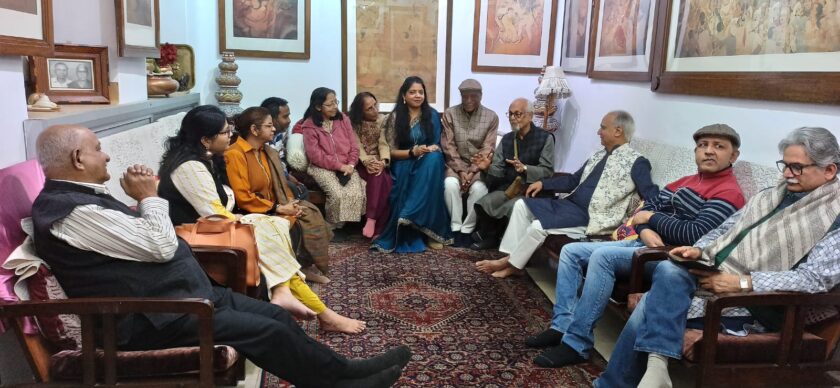Mumbai: Mumbai, the country’s financial capital, has been brought to a standstill as Maratha reservation activist Manoj Jarange’s protest enters its fifth day. With thousands of supporters pouring into the city, both road and rail traffic have been severely affected, prompting the Bombay High Court to intervene on Monday.
The High Court ordered that protestors must vacate the grounds by Tuesday afternoon and directed authorities to restore normal traffic flow. It also capped the number of agitators at the protest site at 5,000, warning that Mumbai cannot afford to remain paralysed.
On Monday, traffic chaos engulfed major areas including CSMT, Fort, Churchgate, and Mantralaya. Dr. D.N. Road remained completely closed, with diversions only through J.J. Flyover. Access routes to the BMC headquarters and CSMT subway were shut, while bottlenecks developed at Metro Junction, Bombay Gymkhana and Marine Drive stretches leading to the Vidhan Bhavan.
Authorities fear a larger influx as protesters from rural Maharashtra—particularly women—head towards Mumbai after Ganesh Visarjan. Reports suggest 10,000–12,000 vehicles from Nagar district alone are on their way, while social media calls have mobilised youth across Marathwada and western Maharashtra.
Political observers point to lapses in police intelligence and internal rifts within the ruling coalition. Despite the High Court suggesting an alternate protest site at Navi Mumbai’s Kharghar, the government allowed Jarange’s supporters to gather at Azad Maidan in south Mumbai, a decision now being widely criticised.

Jarange, who hails from a modest farming family, has become the face of the Maratha reservation movement since 2023. Known for his austere appearance—white attire and a saffron scarf—he resumed an indefinite fast on August 30, drawing massive crowds. This marks his seventh hunger strike in two years.
The agitation has revived memories of earlier caste-based reservation protests in Gujarat, Haryana, and Rajasthan, many of which ended without concrete gains. Analysts note that while Jarange has tapped into long-standing community grievances, the movement’s escalation in Mumbai threatens law and order at a critical time, with local body elections looming.
Chief Minister Devendra Fadnavis, already under pressure, faces criticism for mishandling the situation. Opposition parties accuse the government of ignoring early warnings, while sections of the ruling alliance fear the unrest could reshape caste equations in the state.
For now, Mumbai continues to struggle with traffic jams and disrupted services, as the government balances public order with political compulsions. Whether Jarange’s protest forces concrete concessions on Maratha reservation remains uncertain, but its impact on Maharashtra’s politics is already unmistakable.





